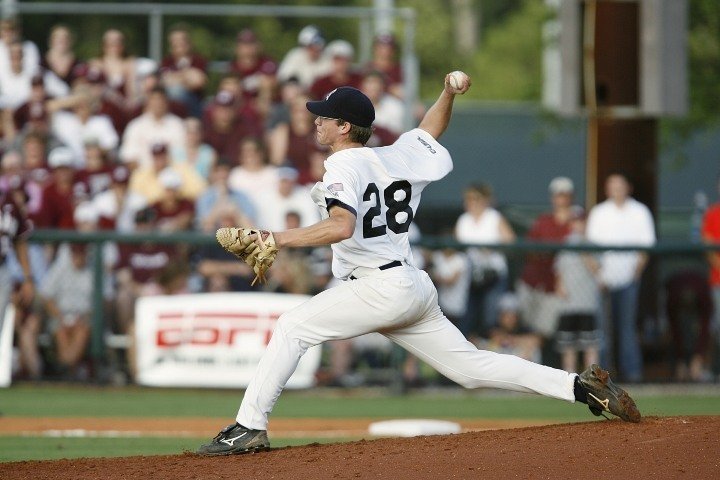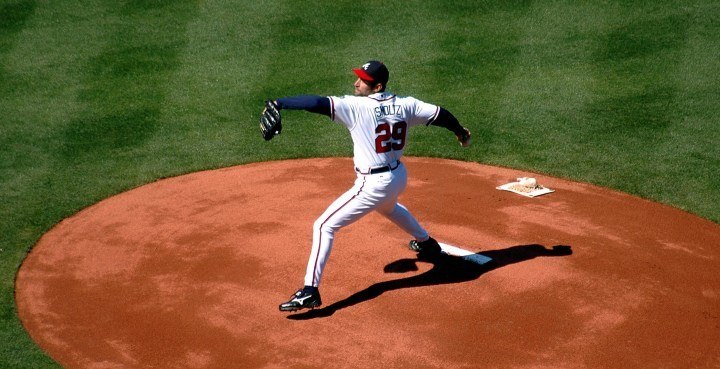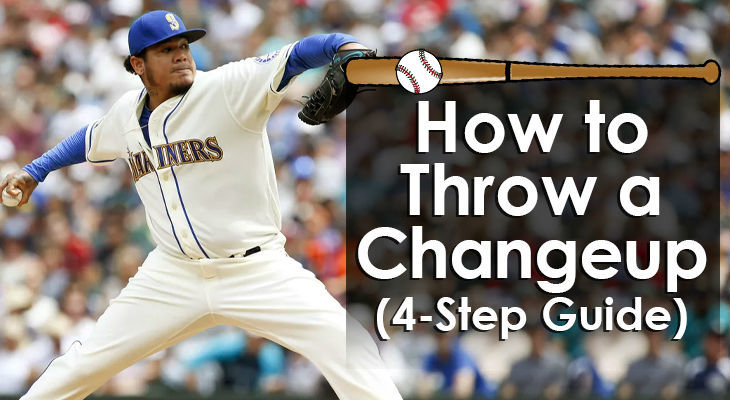The changeup is one of the most basic off-speed pitches that a pitcher can throw.
While there are quite a few variations of it, the basic changeup is easy to understand. Most youth pitchers should learn how to throw a changeup right after they learn the fastball.
In addition, a changeup doesn't put as much stress on a player's throwing arm or elbow than other off-speed pitches such as curveballs and other breaking balls because there is no sharp snapping motion required.
The idea is to fake a batter into thinking you're throwing a fastball, and the best way to do that is with the same arm motion.
While a changeup is very simple in nature, it can be a very devastating pitch.
The best changeups are some of the most effective pitches someone can throw.
If you want proof, just look at old videos of Hall of Fame pitcher Greg Maddux and what he was able to do with his changeup.
No matter what type of pitcher you are -- a lefty, righty, finesse or power pitcher -- a changeup is a great pitch to learn to add to your arsenal.
You don't even need to throw a really strong fastball in order to throw an effective changeup.
The slight variation on speed, and the added movement on the ball, will keep batters off-balance and have you missing bats with your pitches.
There are a few variations on the changeup, but let's focus on the most basic one -- the three finger changeup -- and how to throw it in 4 steps.
How to Throw a Changeup
Step #1: Finger Placement
The first step to throwing a good three finger changeup is placing your fingers on the ball the right way.
The grip is essential to a changeup, as it will help you control the speed of the ball, and put a lot of extra movement on it as it reaches the plate.
First, you need to put your ring, middle and index fingers all on the top of the ball, centered overtop of it.
Once those fingers are set, you'll worry about the other two.
Step #2: Pinkie and Thumb
As for your pinkie and thumb, you'll be placing those two under the soft leather section of the baseball.
This helps you get a really firm grip as the baseball sits back in the palm of your hand.
Some pitchers will choose to keep their fingers positioned this way, while others choose to make one more variation.
Some pitchers like to have an even better feel for the baseball, and they do this by bending their index finger and thumb ever so slightly so that they touch at the bottom of the ball.
Step #3: Focus on the Palm
Unlike a lot of other pitches, you want the baseball to sit back deep in your palm when you're throwing a changeup.
This placement adds friction to the ball, which will slow it down some.
Obviously, this is in direct contrast to what you want to do when you're throwing a fastball, which is why you don't grip the ball this way with that pitch.
With a fastball, the idea is to push the baseball forward with your fingers, and make a whipping motion while doing it.
You won't be doing that with a changeup, though...
You'll instead ask your palm to do this work, so your fingers will remain limp and there will be no whipping action.
That's why you'll want the baseball to be gripped deep at the base of all your fingers.
When you go to release it, you'll then want the ball to turn over as well as inward.
Step #4: Throw It Like a Fastball
Now that you have the grip down, it's time to actually throw the ball.
The key here is that you want to confuse the batter and trick them into thinking that you're throwing a fastball.
The best way to do that is to throw your changeup with the same motion that you throw your fastball.
This means you'll use the same exact technique that you do with that pitch.
You'll start your windup by stepping back or sideways with your off-foot, lifting your arms/elbows above your head then moving them both forward, cocking your throwing arm back behind your body, bending both your knees and throwing the ball with the knee on your opposite foot bent and following through to finish.
The keys to throwing a solid changeup are making sure that your pitching motion -- both your arms and your body -- move at the same speed as when you throw a fastball.
A lot of pitchers who haven't perfected the changeup will give away what pitch they're throwing by having their body move at the same speed as the fastball, but then abruptly slowing down their arm as they're about to throw.
A changeup only has to be roughly 10% slower than your fastball.
To do that, you don't need to significantly slow down any part of your body in your windup or release.
In fact, the deep grip of the ball in the palm of your hand -- and the friction that it creates -- will cause the pitch to be slower on its own.
That means you don't have to change anything at all in your delivery in order for the changeup to do its job.
All you have to do is ensure you keep the same windup, delivery and arm slot for your changeup as you do for your fastball.
Once you perfect that consistency, you'll be able to truly confuse batters and have them swinging and missing.

Changeup Variations
There are two other types of changeups that you can throw -- the circle changeup and the palm ball.
Nothing will change in your windup, delivery and/or release with these variations.
All that will change is the grip you have on the baseball.
Some pitchers prefer one variation over the next because they feel more comfortable with the grip and feel they can deliver the pitch more effectively.
Others like the way the ball moves out of their hand to confuse the batter even more.
There is no right or wrong variation to throw a changeup -- and no variation that is preferred over another.
You just have to find the one that works best for you after taking some time to try them out and tinker with them.
Let's take a closer look at the two variations of the basic three finger changeup.
a. Circle Changeup
The circle changeup gets its name from the fact that you will be creating a mini circle shape with two of your fingers on the grip.
The grip on this variation starts the same way as that of the three finger changeup.
Your middle, ring, and pinkie fingers will all be centered on top of the baseball, and your index finger and thumb will be on the back side of the ball as well.
The alteration in the grip comes by curving your index finger down from the top and touching the thumb at the knuckle.
This will create a small circle once these two digits meet, which gives the pitch its name.
Unlike the three finger changeup, you'll want to position the ball firmly back against this circle that your index finger and thumb have created.
There will still be plenty of friction that this different grip will create, so don't worry that there may be less friction because of the change in grip.
Again, your body mechanics, delivery, arm speed and release will all be exactly the same as they are for your fastball.
This is what will cause confusion among the batters.

b. Palmball
The palmball name is a little deceptive, as the three finger changeup also requires you to place the baseball deep in the palm of your hand.
That's why this variation is sometimes called the four finger changeup.
What you'll do with this pitch is place the ball all the way back into your palm first, and then wrap all your fingers around it.
In essence, it should feel like your palm is gripping the baseball, and all your fingers are doing are encapsulating it.
Your fingers should simply be there to make sure the ball doesn’t fall out of your hands -- they should not be putting significant pressure on the baseball.
Your ring and index fingers will go on the sides of the baseball to help create balance.
The thumb will be positioned directly below the ball, and your two other fingers will be spread out evenly over the top of the ball.
At the release, you'll want to try to turn the ball over, as this will cause the most movement possible.
The deeper you are able to grip the ball in your palm, the more friction you will create.
Once again, all your body mechanics should be exactly the same as a fastball.
The change in grip is what will cause the ball to come out much slower -- and with much more movement -- than your fastball.
Conclusion
One of the best things you can do is learn how to throw a changeup.
It's a very simple off-speed pitch that is meant to deceive batters by making them think you're throwing a fastball, only to figure out after it's too late that the pitch is 10% slower.
The changeup can be so devastating, but it's also so easy to learn, which is why it's often the first off-speed pitch that coaches teach pitchers to throw.
There are three varieties of the changeup, but all of them can have the same devastating effects.
There is no one method that is better than the others.
You just need to find whatever grip works best for you and your delivery.
The key to a successful changeup -- no matter which variation you throw -- is to make sure that your delivery, windup, and release all look exactly the same as your fastball.
That means not slowing down any part of your body at all.
What will make the changeup move slower and with more motion than your fastball is the grip.
By gripping the ball deeper in your hand and with more fingers touching the ball, you'll be creating more friction to naturally slow the ball down.
As with any pitch, the more you practice, the better you'll get at throwing it
So get on out there and perfect that changeup!

